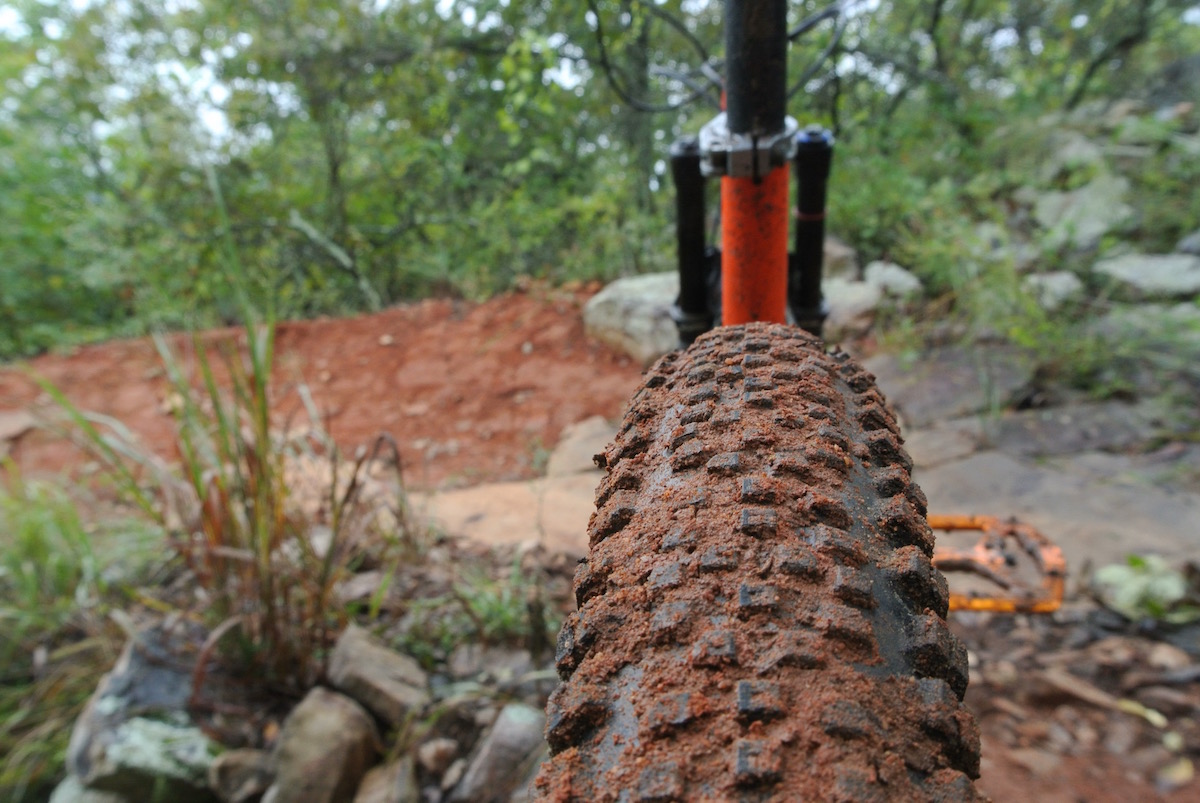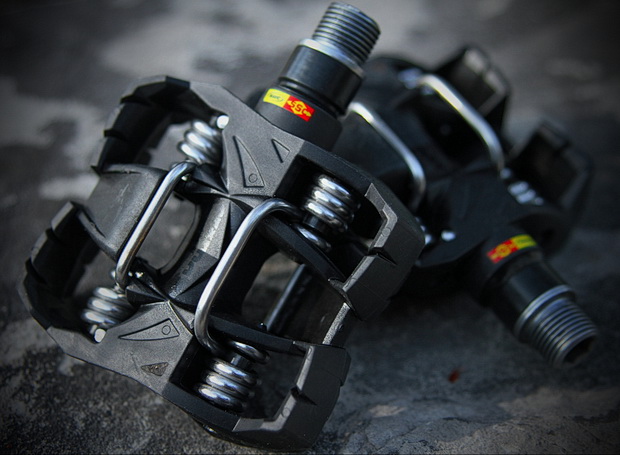WTB has been on a tear the past couple years, releasing all kinds of new products. We stopped by their booth at the 2015 Sea Otter Classic to check out the new wares, and Will from WTB sent me home with a pair of tires to try out: a Riddler for the rear and a Trail Boss for the front.
Design
Named for one of WTB’s athletes, Nathan Riddle, the Riddler tire is a semi-slick. That means small, tightly spaced knobs on the center tread with large side knobs to aid in cornering. Semi-slicks have been around for a long time, but like many things in mountain biking, their popularity is cyclical (neon colors, anodized everything, fanny packs…). Right now, semi-slicks are hot in enduro racing. Riders want a tire with low rolling resistance, but one that can also handle cornering at speed. Most often, you’ll see a semi-slick used as a rear tire.

I opted for the 27.5″ x 2.40″ size with WTB’s Tubeless Compatible System (TCS) Light casing. The most important thing to note is that TCS tires use a UST-certified bead, where most other companies just use a standard folding bead for their tubeless tires. Back in the early days of tubeless conversions (non-UST), I blew some tires off of rims that lead to a couple of very scary crashes. However, both tire and rim technology has come a long way in the past decade. Once in a blue moon, I’ll burp a tire, but it’s been years since I’ve fully blown one off a wheel. The TCS system does add that little bit of extra security, though.
In the spec I received, the Riddler weighs in at 868g and retails for $67.95. It’s also available with their TCS Tough casing, which brings the weight up to 1108g for the same size. The price for the TCS Tough also goes up, to $76.95.
Mounting
My previous job was working for a tire company, handling all things bicycle. Part of that position was changing tires: mounting and un-mounting tires for photoshoots, trade shows, and testing. All those countless swaps gave me gorilla-like hand strength. But I met my match with the Riddler. After several minutes of straining and swearing, I had to break out the tire levers.
I should note that I rode the Riddler on two different wheel sets. The first was a custom set with WTB’s own i25 rims, and the other was SRAM’s Rail 40. Mounting the tires on either wheel was equally difficult.
Once the beads were finally both on the rim, airing them up was no problem. On both wheel sets, the beads snapped satisfyingly into place with a floor pump. I added sealant only after getting both beads seated.
Riding
Of course, the day I mounted up the Riddler, it rained. I went out the day after, and was sliding all over the place on the slimy trails. To be fair, the conditions would have been tough for any tire. Mud isn’t the Riddler’s forte, but that’s not what it was designed for, either.

On dry trails, which the Riddler was designed for, it rips. The small center knobs do what they’re supposed to and get you up to speed quickly, while the side knobs provide excellent support for ripping through berms. Chunky sections of trail are no problem, as long as it’s dry–wet roots and rocks can be a little wild, especially at slower speeds. A little speed helped the Riddler feel more planted in the damp.
Braking was much better than I expected for a tire with such minuscule center tread. It looks like WTB made the knobs just big enough to provide adequate bite. Granted, they won’t dig in like a tire with larger knobs, but for what they are, I was impressed. Locking up the rear wheel happened much less frequently than I thought.

The casing feels very supple, conforming to the trail surface like a good tire should. Typically, the trade off for a supple casing is less durability. That doesn’t seem to be the case with the Riddler, though. On my wheels, the sidewalls seem to bulge out a bit more than other tires, leaving them exposed to all sorts of pointy trail debris. Initially I was worried about slashing them open, but it hasn’t been an issue. I have yet to flat them, even though I’ve bottomed the tire out against the rim a handful of times.
Tread wear has been excellent as well. WTB calls the compound on these tires Dual DNA. A firmer compound is used on the center knobs to reduce rolling resistance and improve lifespan. The side knobs get a softer, slower rebounding compound for better grip. The mix seems to be working well, with the tire just starting to show some wear after a couple hundred miles.

Final Thoughts
Really, the only drawback to the tire is how tight the bead fits. And that’s only an issue in the case of a flat out on the trail. But the tightness of the bead also makes for a more secure connection with the rim. Ah, tradeoffs.
The Riddler is a conditions-specific tire. It’s not for everyone, especially if you have frequent changes in weather. Here in Georgia, where we get long stretches of hot weather that bakes the trails, the Riddler is a great choice for summer riding. It’s also good for the racer that’s looking to squeeze out speed wherever possible. Out of the corners, on the pedals, the Riddler is noticeably quicker than a regular trail tire.
Thanks to WTB for providing the Riddler for review.



















